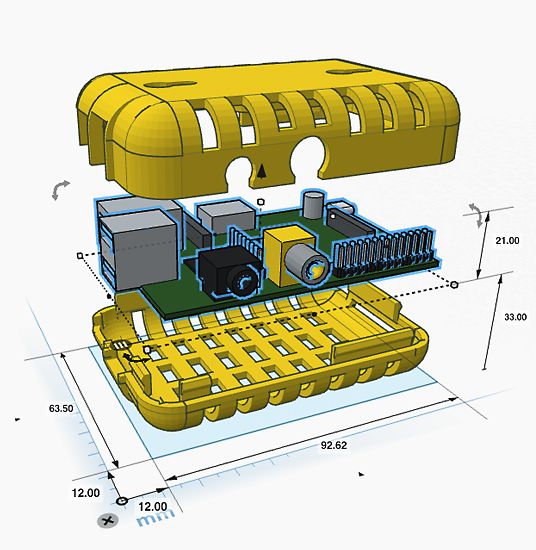Latest News
June 14, 2013
While Autodesk’s absorption of Tinkercad adds another option to the firm’s rapidly expanding consumer-oriented product line, the more interesting aspect to the deal lies in its potential to help fuel adoption of 3D printing, which hinges on the availability of cheap and accessible design tools.
There’s a lot of excitement around 3D printing right now and most of the hype surrounding the DIY innovation wave is focused on the seemingly endless stream of low-cost 3D printers entering the market. It wasn’t too long ago that RepRap open source kits and assemble-yourself Makerbot printers, all priced upwards of $2,000, were about as low end as you could get. Today, there’s a growing lineup of sub-$1,000, office-style 3D printers from a long list of companies, including Makerbot’s Replicator 2, 3D Systems’ Cube, Formlabs Form1, Printrbot, and Makibox, among many others. Some companies are offering 3D printers at the sub-$500 price point, and you can now buy an array of 3D printers and supplies at your local Staples, or if you prefer online shopping, at Amazon’s just-announced 3D printing portal.
Yet while this flood of new, inexpensive 3D printers certainly makes the technology more accessible to smaller companies, independent engineers, and design enthusiasts, there is a still a critical bottleneck standing in the way of mainstream adoption—that is, widely available and easily accessible 3D design tools so the community at large can author the content to be output on 3D printers.
“3D printing has been around for over 20 years, but it’s primarily been used in commercial purposes for prototyping,” says Mary Hope McQuiston, Autodesk’s director for the consumer group, explaining the company’s interest in adding Tinkercad to its portfolio. “As the hardware costs continue to come down, you now need the digital piece of the equation—that is, the tools that allow non-professionals and hobbyists to capture ideas in a digital form.”
According to the Wohlers Report 2013, the average annual growth of the 3D printing segment has been an impressive 27.4% from 2010 to 2012. Yet growth in the low-cost (under $5,000) personal 3D printer market segment has cooled significantly, from an average 346% each year from 2008 through 2011, to 46.3% in 2012. Most of these machines have been sold to hobbyists, do-it-yourselfers, engineering students, and secondary and post-secondary educational institutions, leading some market watchers to speculate that this initial market has become somewhat saturated.
While 346% annual growth is near impossible to sustain, market watchers say both the printers and the 3D content creation tools need to become easier and more accessible to grow beyond this first wave to take hold with mainstream consumers.
That’s where Autodesk’s move to fold in Tinkercad comes into play. The company has been pretty active advancing the 3D content creation piece of the 3D printing revolution with its 123D, 123Sculpt, and 123Catch tools, all designed to allow consumers and engineers with limited CAD skills to translate their ideas into 3D models that can be 3D printed. While 123D is great for users that want some precision with their geometry and who have some familiarity with CAD, Tinkercad opens up the door to a whole new universe of users who have no prior experience with CAD, says McQuiston.
Autodesk (and the formerly independent Tinkercad) aren’t the only companies on a mission to bring low-cost and accessible 3D content creation tools to a general audience. Siemens PLM Software, in conjunction with Local Motors, has Design1, 3D Systems offers Cubify.com, and there is the Blender open source project. Sculpteo, an online 3D printing service, also offers a variety of tools to help users create 3D models, and there are others with certainly more to come.
Autodesk’s McQuiston says consumers or CAD novices won’t be the only ones to benefit from the Tinkercad acquisition. She says in keeping with the trend around the consumerization of technology, Autodesk is leveraging a lot of what it learns with Tinkercad and other consumer-oriented products and services for its professional product lines.
“Technology is now being consumed by consumers in their personal life and we’re applying that learning back to the business side of the house where you see it manifest in aspects of community and social learning,” she explains.
Below is a video on Tinkercad.
Subscribe to our FREE magazine, FREE email newsletters or both!
Latest News
About the Author
Beth Stackpole is a contributing editor to Digital Engineering. Send e-mail about this article to [email protected].
Follow DE






